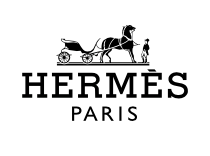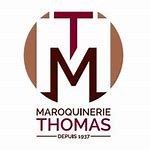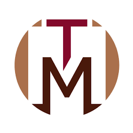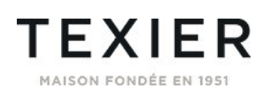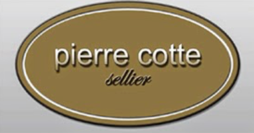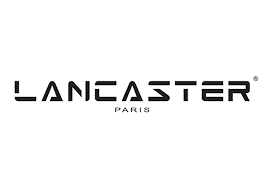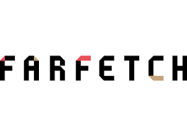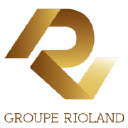Synthèse
from 2020 onwards, the global luxury leather goods market has experienced significant growth. However, trends indicate that the market remains highly concentrated, with leading players such as LVMH, Hermès International and Kering dominating a considerable majority of market share. The industry continues to be propelled by factors such as growing demand from affluent upper-middle-class consumers, particularly in China, and the increasing influence of digital technology and online sales, which have seen a marked rise. In addition, the second-hand market for luxury goods has grown, attracting consumers interested in durability and lower prices. French luxury leather goods, in particular, benefit from the "Made in France" label, synonymous with quality and craftsmanship.
Despite a dynamic market, challenges such as the impact of veganism and the need for ethical and sustainable production practices are emerging trends that are influencing the direction of the industry: changing consumer habits in France's dynamic luxury leather goods market The French luxury leather goods market has enjoyed an impressive growth trajectory, reflecting global trends and supported by increasingly demanding consumer segments.
The French Luxury Leather Goods Market: Trends, Tourism and Sustainability
Women represent the dominant force in demand, accounting for between 90% and 95% of the market for luxury bags and small leather goods. This trend has remained constant, with the proportion of sales to women remaining unchanged at around 92% over a five-year period, despite the explosion in total sales from around €2,465 million to almost €4,000 million.
This robust market is also characterized by its appeal to a diverse range of consumers, including a considerable influx of tourists. France, with a record number of tourist arrivals exceeding 90 million, benefits significantly from Chinese visitors gravitating towards duty-free luxury goods, particularly during key periods such as Golden Week. The contribution of Chinese tourists to the French luxury market has been meteoric, with increased spending and the realization of around 35% of the value of luxury purchases worldwide. Their influence is matched only by that of the burgeoning cohort of millennials, who already hold around 35% of the luxury market, with forecasts suggesting their share could reach 45% by 2025.
Sustainability has become a key demand factor in the French market, with around two-thirds of French consumers acknowledging the influence of ecological considerations on their purchasing decisions. Age plays a key role in determining which aspects of sustainability are prioritized, with an emphasis on transparency of materials, ethical production practices, ecological impact and animal welfare across different consumer age brackets. This is exemplified by the vegan leather movement, an ethical and environmentally-friendly alternative that challenges traditional notions of the leather industry and invites innovation from luxury and vegan brands alike. Meanwhile, the "Fabriqué en France" label enjoys a commendable reputation, synonymous with heritage and craftsmanship.
The country is highly regarded for its expertise in luxury goods, and around 20% of global consumers consider France to be the leading manufacturer of high-end handbags and shoes. This esteem propels the French market to the forefront of global luxury goods production, an image that is continually reinforced by the market's inclination towards quality, innovation and respect for the environment. In essence, the French luxury leather goods market is not only thriving numerically, with sales set to increase by around one billion euros in the years ahead, but is also evolving.es to come, but it is also evolving qualitatively, with growing demands for sustainability, provenance and social responsibility.
Notable giants of the luxury leather goods industry
In the refined and illustrious world of luxury leather goods, several iconic players have forged an unshakeable reputation for offering unrivalled quality, style and sophistication through their exceptional products. These major players don't just dominate the market, they shape it through their innovative designs, marketing strategies and investment in craftsmanship.
- LVMH (Moët Hennessy Louis Vuitton) stands at the pinnacle of luxury, not only holding a dominant market share, but boasting a portfolio of more than a dozen famous brands, including the illustrious Louis Vuitton. With Louis Vuitton alone accounting for 30.5% of luxury leather goods sales in France in 2018, LVMH has firmly established itself as a heavyweight in the luxury sector. The conglomerate's strategy of promoting heritage and craftsmanship, coupled with aggressive expansion, has enabled it to capture the hearts of luxury consumers worldwide.
- Hermès International has forged a legacy of meticulous attention to detail and a commitment to preserving and nurturing artisanal techniques. A name that instantly evokes prestige, Hermès is renowned for its exquisite craftsmanship and the iconic status of its bags such as the Kelly and Birkin, which are not just accessories but considered investments in their own right, sometimes fetching extraordinary prices in auction houses.
- Kering is another major group in the luxury goods landscape, with flagship brands such as Gucci and Saint Laurent enriching its portfolio. Kering's modern approach to luxury branding, combined with a focus on sustainability and digital innovation, is helping it to resonate with younger, more socially conscious consumers.
- The Chanel brand no longer needs to be presented as a purveyor of haute couture. With its 2.55 handbag, a timeless piece that symbolizes the marriage of luxury and function, Chanel continues to be an emblem of sophistication across generations. The brand's commitment to exclusivity and high-quality craftsmanship adds further appeal to its already esteemed collection.
- Prada has stood the test of time, with products that reflect avant-garde aesthetics combined with practical elegance. Prada's stories and creations often push boundaries, making the brand a must-have for those seeking a blend of contemporary style and classic luxury.
- Among these luxury houses, there are also skilled subcontractors like Thomas Leather Goods, who may not be household names but are an integral part of the industry. They bring their technical expertise and know-how to the big brands, enriching the luxury leather goods sector.
à la compréhension de ce marché
Détail du contenu
 Informations
Informations
- Nombre de pages : 30 pages
- Format : Version digitale et PDF
- Dernière mise à jour : 03/11/2021
 Sommaire et extraits
Sommaire et extraits
1 Market overview
1.1 Presentation
Leather goods refers to the industry of preparing fine leather and producing articles with this same leather, whether they are bags, gloves, belts, or other fashion items. While it is easy to name some of the houses that belong to the world of luxury, it is much less easy to draw a clear line between leather goods as a whole and the so-called luxury leather goods.
According to a a report from the National Leather Council, the leather goods sector as a whole generated a turnover of 3.236 billion Euros in France in 2017, for a sector that includes 448 companies and employs nearly 21,000 people in France.
Moreover, according to Mazars,"made in France" would be particularly sought after in a global luxury leather goods market that grew by 70% between 2003 and 2012.
The luxury leather goods market remains dominated by the main luxury brands, leaving little room for new entrants. The numerous takeovers testify to the growing concentration of the market.
The main source of growth in the market remains China and its upper-middle class with strong purchasing power.
1.2 A growing global market and optimistic professionals
Breakdown of luxury revenues by segment World, ****, % Source: ****
The global luxury market has grown in recent years to reach $**** billion in ****. **% of revenues are for the luxury personal goods segment, which includes luxury leather goods.
Breakdown of luxury personal goods revenue by segment World, ****, % Source: ****
The Luxury Leather Goods segment represents ...
1.3 A fast growing French market
In line with the good figures worldwide, luxury leather goods are doing very well in France.
Evolution of luxury leather goods sales France, ****-*****, million euros Source: ****
Luxury leather goods recorded a strong increase between **** and ****. According to Euromonitor forecasts, this trend is expected to continue: between **** and ****, Euromonitor considers that ...
2 Analysis of the demand
2.1 A demand primarily from women
Distribution of sales of luxury leather bags and small leather goods by gender France, ****, % Source: ****
The demand for luxury leather goods in France is mostly female. Sales of luxury leather bags and small leather goods are mainly aimed at women. The latter accounted for **% of sales in **** and still accounts for ...
2.2 The different consumers
Tourists, especially from China
Luxury leather goods have been able to benefit from an increase in local and especially international purchases. Indeed, France has set new records in terms of tourist arrivals, with over ** million foreign visitors in **** and ****. Among them are Chinese tourists, who now play a key role in ...
2.3 Sustainability criteria: the emergence of veganism
According to a BCG survey, **% of the French consider that their purchasing behavior is influenced by sustainable development criteria. This trend is even stronger among the younger generations. However, the criteria vary according to the age category as illustrated below.
Which sustainability criteria do you value when it comes to buying ...
2.4 The Made-in France label
Made-in-France is a guarantee of quality: consumers associate it with know-how and history.
Which manufacturing country do you consider the best for luxury brands? World, ****, % Source: ****
According to a survey conducted by BCG, France ranks second in terms of recognition of its know-how. Although Italy is considered the best manufacturing country ...
3 Market structure
3.1 At the base of the value chain: the activities around the raw material
Suppliers of raw hides and skins
Companies operating in the leather and raw hide sector are often directly integrated into the slaughterhouses. Their activity depends largely on the economic situation of the agricultural world (***) as well as on the evolution of the national and international leather market.
Evolution of the turnover ...
3.2 French leather goods production concentrated in Ile-de-France and Auvergne-Rhône-Alpes
In this section, we broaden the scope of the study, and focus not only on luxury leather goods, but leather goods in general and more specifically items manufactured in France (***). The turnover of the French Leather Goods industry amounts to *.* billion euros, up *% from last year in ****. [***] This trend is explained ...
3.3 A concentrated market
Breakdown of the luxury leather goods market share France, ****, % Source: ****
The French market is highly concentrated: indeed, * groups gather **% of the market share. These are LVMH SA, Hermès International SCA and Kering SA. LVMH SA is the leader in this market, with **% of sales, far ahead of Kering SA (***).
While ...
3.4 The distribution of leather goods is marked by the rise of digital technology
Evolution of the distribution of luxury leather goods sales by type of distribution France, ****-****, % Source: ****
It can be seen that the majority of sales are made in stores. Online sales are in the minority, but the share of luxury leather goods sales made online has been growing steadily in recent ...
4 Analysis of the offer
4.1 Price range & auction
Pricing of leather luxury products
Source: ****
Although it is difficult to define a clear boundary between what is luxury and what is not, one great characteristic that is unique to luxury items is that they have no upper price limit. Thus, if we can arbitrarily consider that a luxury handbag starts ...
4.2 Production concentrated on a small number of products
In this section, we broaden the scope of the study, and focus not only on luxury leather goods, but leather goods in general and more specifically on items manufactured in France (***). Billing for leather goods manufactured in France by an establishment or one of its subcontractors amounted to approximately €*.* billion in ...
4.3 The growing importance of the second-hand market
The second-hand market is steadily increasing. Luxury brands of bags and luggage are particularly popular via these channels, with bags accounting for **% of the second-hand market in France and small leather goods accounting for **% of luxury second-hand purchases.
Multiple web platforms promote second-hand items, as illustrated in the chart below:
Platforms ...
4.4 The threat of counterfeiting
European luxury manufacturers lose nearly ** billion euros a year to counterfeiting. [***] This is not only a loss of revenue, but also a loss of direct jobs: legitimate manufacturers need less manpower and as a result, nearly ***,*** jobs are considered directly lost in these sectors across the EU. Specifically, the luxury clothing, ...
5 Regulation
5.1 Regulations
The "leather" denomination
The term leather is protected by French regulations (***), chips or powders of reconstituted leather and even materials derived from bio-manufactured hides can not bear the name leather. The indications "synthetic leather", "reconstituted leather" or "leather of ..." are therefore not legal and have no right to be affixed to ...
6 Positioning of the actors
6.1 Segmentation
- Hermès International
- Prada Groupe
- Chanel
- Michael Kors
- Maroquinerie Auguste Thomas
- Les ateliers d’Armançon
- Les Ateliers de Vitré
- Maroquinerie Pierre Cotte
- Lancel (Piquadro)
- Lancaster Maroquinier
- Farfetch
- Rioland Groupe
- Kering
- Moynat Paris
- Montblanc (Richemont Groupe)
- Jean Rousseau Manufacture
- Fleurus Groupe
- Coach (Tapestry Capri)
- Piquadro
- Partson Groupe
- Jacquemus
- Gucci
- Cartier (Richemont groupe)
- Louis Vuitton Malletier
- Camille Fournet Maroquinerie
- Algo Goyard Maroquinerie
- Goyard (Algo Groupe)
- SIS Maroquinerie Groupe
- Perrin Créations Maroquinier
 Liste des graphiques
Liste des graphiques
- Répartition des revenus des biens personnels de luxe par segment
- Evolution des ventes de produits de maroquinerie de luxe
- Top 10 des pays en termes de ventes de maroquinerie de luxe
- Evolution du volume de ventes de produits de maroquinerie de luxe
- Volumes de ventes de maroquinerie de luxe par pays
Toutes nos études sont disponible en ligne et en PDF
Nous vous proposons de consulter un exemple de notre travail d'étude sur un autre marché !
Dernières actualités
Entreprises citées dans cette étude
Cette étude contient un panorama complet des entreprises du marché avec les derniers chiffres et actualités de chaque entreprise :
 Choisir cette étude c'est :
Choisir cette étude c'est :
Accéder à plus de 35 heures de travail
Nos études sont le résultat de plus de 35 heures de recherches et d'analyses. Utiliser nos études vous permet de consacrer plus de temps et de valeur ajoutée à vos projets.
Profiter de 6 années d'expérience et de plus de 1500 études sectorielles déjà produites
Notre expertise nous permet de produire des études complètes dans tous les secteurs, y compris des marchés de niche ou naissants.
Notre savoir-faire et notre méthodologie nous permet de produire des études avec un rapport qualité-prix unique
Accéder à plusieurs milliers d'articles et données payantes
Businesscoot a accès à l'ensemble de la presse économique payante ainsi qu'à des bases de données exclusives pour réaliser ses études de marché (+ 30 000 articles et sources privées).
Afin d'enrichir nos études, nos analystes utilisent également des indicateurs web (semrush, trends…) pour identifier les tendances sur un marché et les stratégies des entreprises. (Consulter nos sources payantes)
Un accompagnement garanti après votre achat
Une équipe dédiée au service après-vente, pour vous garantir un niveau de satisfaction élevé. (+33) 9 70 46 55 00
Un format digital pensé pour nos utilisateurs
Vous accédez à un PDF mais aussi à une version digitale pensée pour nos clients. Cette version vous permet d’accéder aux sources, aux données au format Excel et aux graphiques. Le contenu de l'étude peut ainsi être facilement récupéré et adapté pour vos supports.
 Nos offres :
Nos offres :
the luxury leather goods market | France
- Quels sont les chiffres sur la taille et la croissance du marché ?
- Quels leviers tirent la croissance du marché et leur évolution ?
- Quel est le positionnement des entreprises sur la chaine de valeur ?
- Comment se différencient les entreprises du marché ?
- Données issues de plusieurs dizaines de bases de données
Pack 5 études (-15%) France
- 5 études au prix de 75,6€HT par étude à choisir parmi nos 800 titres sur le catalogue France pendant 12 mois
- Conservez -15% sur les études supplémentaires achetées
- Choisissez le remboursement des crédits non consommés au terme des 12 mois (durée du pack)
Consultez les conditions du pack et de remboursement des crédits non consommés.
- 03/04/2024 - Mise à jour des données financières de l'entreprise Michael Kors
- 30/03/2024 - Ajout des informations de l'entreprise Perrin Créations Maroquinier
- 14/03/2024 - Ajout des informations de l'entreprise SIS Maroquinerie Groupe
- 14/03/2024 - Ajout des informations de l'entreprise Goyard (Algo Groupe)
- 13/03/2024 - Ajout des informations de l'entreprise Algo Maroquinerie
- 01/03/2024 - Mise à jour des données financières de l'entreprise Prada Groupe
- 01/03/2024 - Mise à jour des données financières de l'entreprise Chanel
- 04/02/2024 - Mise à jour des données financières de l'entreprise Farfetch
- 30/01/2024 - Ajout des informations de l'entreprise Camille Fournet Maroquinerie
- 18/01/2024 - Ajout des informations de l'entreprise Louis Vuitton Malletier
- 18/01/2024 - Ajout des informations de l'entreprise Cartier (Richemont groupe)
- 18/01/2024 - Ajout des informations de l'entreprise Gucci
- 18/01/2024 - Ajout des informations de l'entreprise Jacquemus
- 17/01/2024 - Ajout des informations de l'entreprise Partson Groupe
- 02/01/2024 - Mise à jour des données financières de l'entreprise Michael Kors
- 04/11/2023 - Mise à jour des données financières de l'entreprise Prada Groupe
- 04/11/2023 - Mise à jour des données financières de l'entreprise Chanel
- 27/10/2023 - Ajout des informations de l'entreprise Piquadro
- 02/10/2023 - Mise à jour des données financières de l'entreprise Farfetch
- 01/10/2023 - Mise à jour des données financières de l'entreprise Michael Kors
- 11/08/2023 - Ajout des informations de l'entreprise Coach (Tapestry Capri)
- 03/08/2023 - Mise à jour des données financières de l'entreprise Prada Groupe
- 28/07/2023 - Ajout des informations de l'entreprise Fleurus Groupe
- 28/07/2023 - Ajout des informations de l'entreprise Jean Rousseau Manufacture
- 28/07/2023 - Mise à jour des données financières de l'entreprise Chanel
- 21/07/2023 - Ajout des informations de l'entreprise Montblanc
- 14/06/2023 - Mise à jour des données financières de l'entreprise Farfetch
- 02/05/2023 - Mise à jour des données financières de l'entreprise Prada Groupe
- 16/04/2023 - Mise à jour des données financières de l'entreprise Chanel
- 09/03/2023 - Mise à jour des données financières de l'entreprise Farfetch
- 26/02/2023 - Mise à jour des données financières de l'entreprise Kering
- 23/02/2023 - Ajout des informations de l'entreprise Moynat Paris
- 01/02/2023 - Mise à jour des données financières de l'entreprise Prada Groupe
- 14/01/2023 - Ajout des informations de l'entreprise Kering





 Michael Kors, Coach : l'antitrust bloque la création d'un nouveau géant américain du luxe accessible - 23/04/2024
Michael Kors, Coach : l'antitrust bloque la création d'un nouveau géant américain du luxe accessible - 23/04/2024
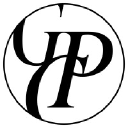 Le maroquinier Créations Perrin pousse les murs dans le Doubs - 15/03/2024
Le maroquinier Créations Perrin pousse les murs dans le Doubs - 15/03/2024
 SIS prévoit 300 embauches pour sa nouvelle usine d'Epinal - 14/03/2024
SIS prévoit 300 embauches pour sa nouvelle usine d'Epinal - 14/03/2024
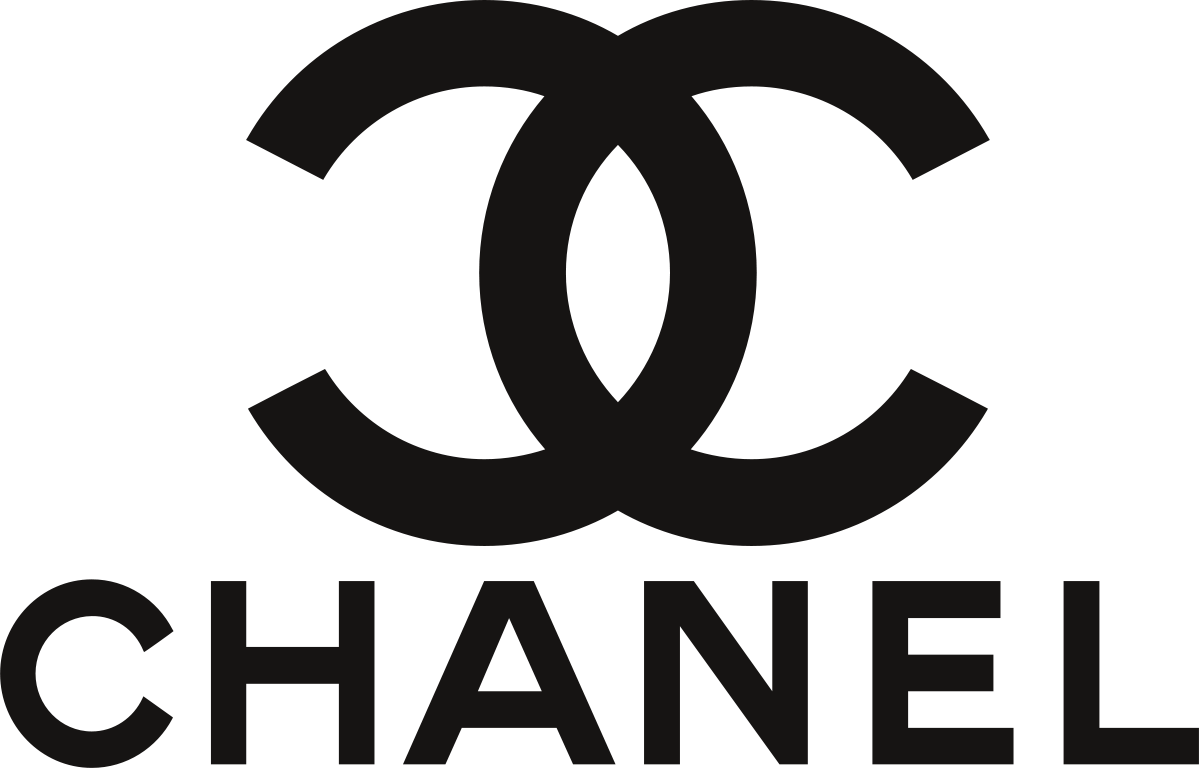 Chanel investe ancora in Italia: nuova giunteria per Gensi Group - 29/02/2024
Chanel investe ancora in Italia: nuova giunteria per Gensi Group - 29/02/2024
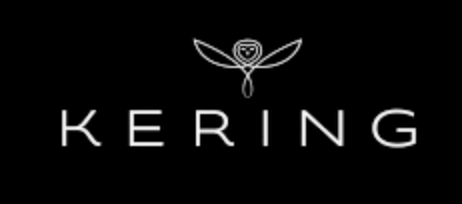 Largement dans le vert malgré des ventes en baisse en 2023, Kering poursuit ses investissements - 19/02/2024
Largement dans le vert malgré des ventes en baisse en 2023, Kering poursuit ses investissements - 19/02/2024
